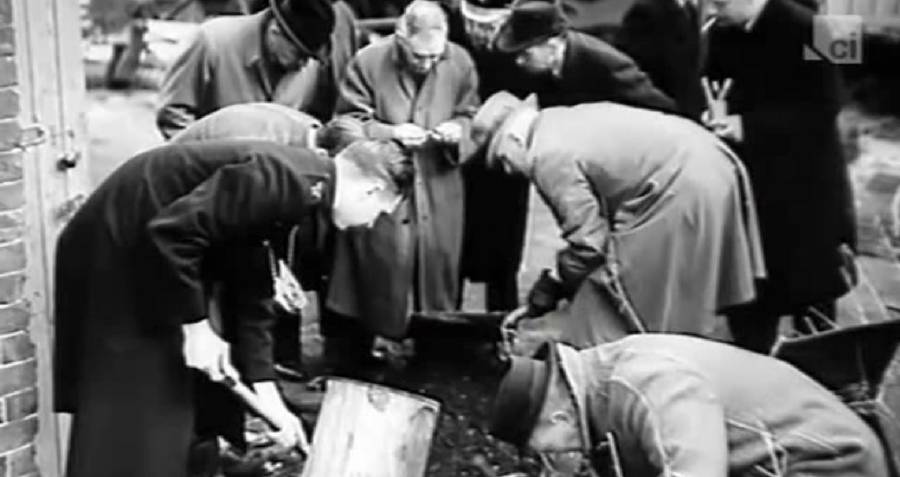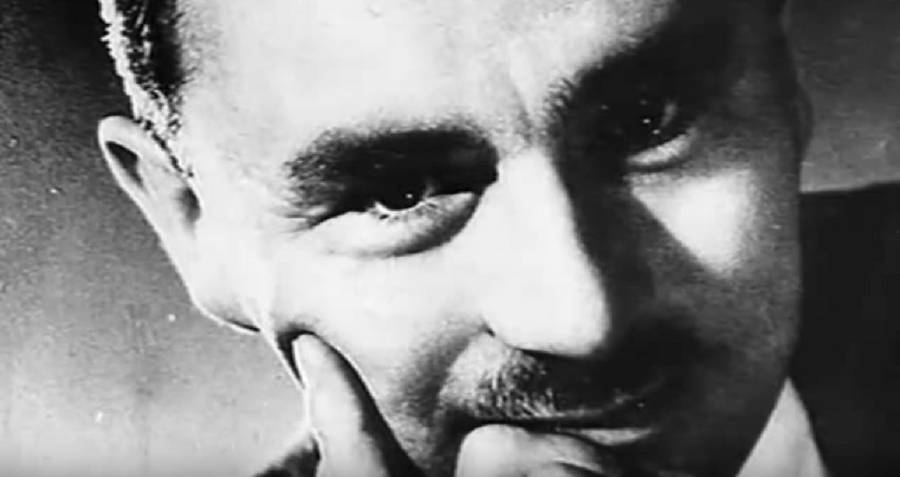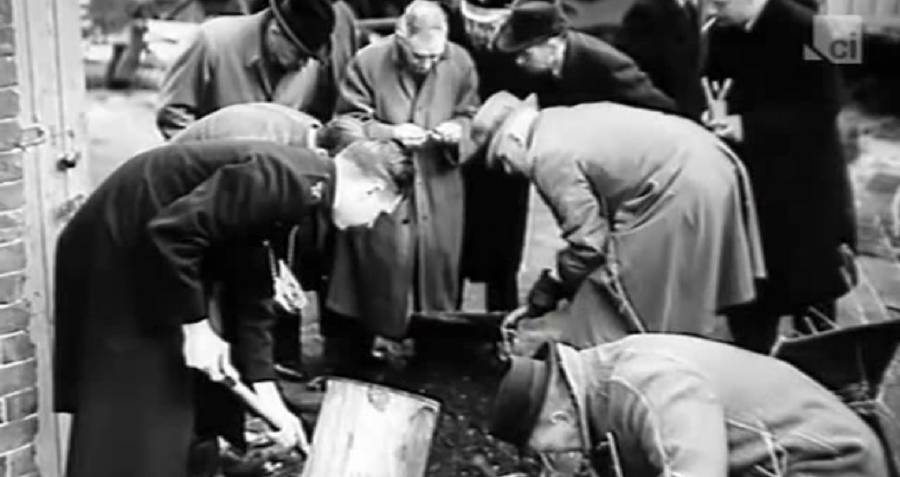
Long before Walter White dissolved bodies in bathtubs, John George Haigh used sulphuric acid to cover up his crimes.

YouTubeJohn George Haigh, also known as the “Acid Bath Murderer.”
In February of 1949, police raided a warehouse on Leopold Road in West Sussex, owned by John George Haigh. Inside, they found several 40-gallon drums and containers of concentrated sulphuric acid. Outside, they found 28 pounds of melted human body fat, part of a human foot, human gallstones, and part of a denture.
It was clear to investigators, from the acid inside, what had happened. Haigh had murdered someone and dissolved their body in acid to hide his crime, Breaking Bad style.
However, what would become more shocking over the course of the investigation was that he had done it before and had planned to do it again, had it not been for one small misstep.
John George Haigh had not started out a killer. He had been born into an affluent, conservative family in Yorkshire, grew up attending classical music concerts, and was awarded several scholarships throughout his academic life.
His charmed adolescence ended at the age of 25 when he was arrested and jailed for fraud, just months after marrying. Upon his imprisonment, his new bride left him, and his conservative relatives decided they wanted nothing to do with him.

YouTube Investigators at the crime scene outside the warehouse where John George Haigh killed Olive Durand-Deacon.
After serving just two years, John Haigh was released from prison and moved to London, where he became a chauffeur. However, despite serving time for fraud, he continued to swindle unsuspecting do-gooders out of their money.
He would pretend to be a solicitor named William Adamson. He would frequently sell fraudulent stock shares from the estates of his dead “clients” at below-market rates. Eventually, he was caught when one of his clients realized he had misspelled his false name on a legal document.
In 1939, he was arrested and imprisoned again, this time sentenced to four years for fraud. While in prison, Haigh realized that his biggest downfall was that he had left his fraud victims alive to report the crimes.
Haigh spent the rest of his time in prison devising ways to dispose of any witnesses to the crimes that he fully intended to continue committing upon his release.
He began researching the French murderer Georges-Alexandre Sarret, who’s signature had been dissolving his victims in sulphuric acid. Using his free time, he devised his own method of dissolving bodies in various forms of acid by practicing on mice. Eventually, he found that it took 30 minutes for a small field mouse to dissolve, and was able to calculate how much acid and time he would need for a full grown man.
Four years later, free from prison and armed with his macabre knowledge, John George Haigh took a job at an engineering firm in the accounting department. Soon after, he ran into an old friend, named William McSwan, whom he had worked as a chauffeur for. McSwan told him about his new venture as a landlord, collecting rent from the tenants who stayed in his parents’ multiple properties.

Wikimedia Commons John George Haigh during his trial.
Though he had a well-paying job at the engineering firm, Haigh became jealous of McSwan’s seemingly lavish lifestyle and the little effort he seemed to put into it. A few months after bumping into him, Haigh lured McSwan to an abandoned basement and hit him over the head.
Using his newfound disposal method, Haigh put McSwan’s body into a 40-gallon drum and filled it with concentrated sulphuric acid. Two days later, McSwan was nothing more than a hundred or so pounds of sludge, which Haigh poured down a manhole.
Riding the high of his successful murder, Haigh took over McSwan’s landlord duties, telling McSwan’s family that he had run away to avoid being drafted. Eventually, when the elder McSwans became suspicious, as their son had not returned home even after the draft was over, John George Haigh killed them as well.
Left with their money and their properties, Haigh moved into the Onslow Court Hotel in Kensington. However, the roughly $10,000 he had stolen didn’t last long, as he shortly developed a gambling problem. Running through his cash quicker than he expected, Haigh was forced to find another wealthy couple to kill and rob.
After feigning interest in a house that was for sale, Haigh murdered the owners, Dr. Archibald Henderson and his wife, Rose. Both Hendersons were disposed of at a warehouse in Gloucester, where the McSwan family had also been killed. The warehouse seemed to be the perfect place, as it was relatively remote and contained a manhole where the human sludge could be easily disposed of.

YouTubeOlive Durand-Deacon, John George Haigh’s last victim.
After the five murders, John Haigh rented a larger warehouse on Leopold Road with more space for his drums and acid concoctions. Here, he would kill and dissolve his final victim.
Olive Durand-Deacon was a wealthy widow who lived at the Onslow Court Hotel with Haigh. Olive thought herself something of an inventor, and, upon finding out that Haigh worked at an engineering firm, asked if she could talk to him about an idea she had for artificial fingernails. Haigh took the opportunity to lure her to his warehouse, and murder her there.
Olive Durand-Deacon was the body that investigators discovered outside the Leopold Road warehouse. You see, unlike Haigh’s previous disposal grounds, the Leopold Road warehouse had no floor drain and no manhole access. Unable to pour the sludge quietly into the sewers, Haigh had been forced to dump it in a pile of rubble behind the warehouse, where it was easily uncovered by investigators.
Upon the discovery of Olive Durand-Deacon’s body, Haigh was arrested and charged with murder. Now known in popular media as the Acid Bath Murderer, he pleaded insanity and claimed that drinking the blood of his victims had driven him mad, though there was no evidence that he had in fact consumed human blood.
After hearing his insanity defense, one of the arresting officers mentioned to the prosecutors that Haigh had asked him what the chances were of being released from a psychiatric hospital, versus prison.
The jury then took only minutes to return a guilty verdict on Haigh, sentencing him to death. On August 10, 1949, John George Haigh was executed for his crimes.